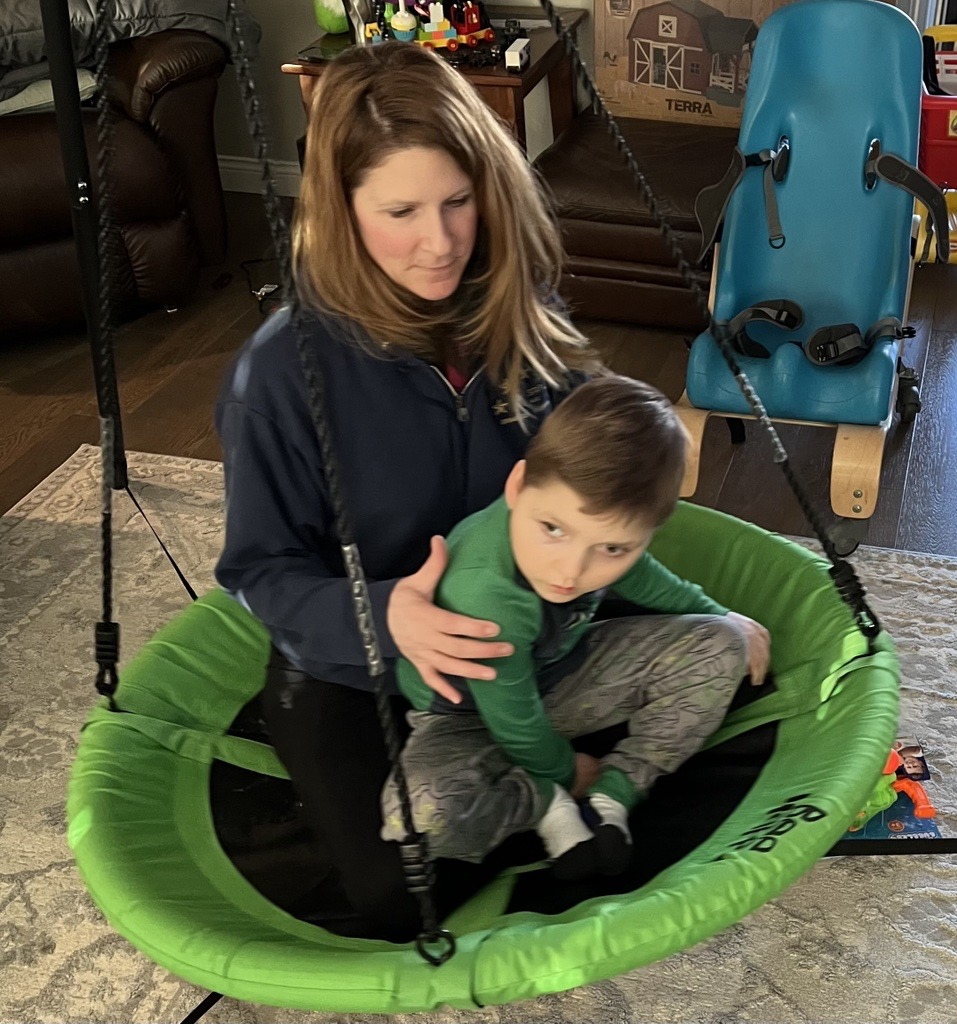Feeding tubes. Anyone who has trouble swallowing or cannot eat or drink enough through the mouth may need a feeding tube. Perhaps it is a child with a developmental disability. A patient with head or neck cancer. Feeding tubes can seem overwhelming for the caregiver.
Registered Dietitian, Kara Booth, understands feeling overwhelmed. She learned about feeding tubes while earning her degree. Last year, her son was placed on a feeding tube.
“You gain priceless information you otherwise would not know,” shares Booth.

Her son Preston is seven years old. He was diagnosed with cerebral palsy at the age of one. He has oral dysphagia—or trouble chewing. He was on a puree diet. Last year he had aspiration pneumonia and was switched to a feeding tube.
“I miss the joy of eating for him,” shares Booth. “He loves Reese Cups. But now I know exactly what he eats and what he needs.”
Booth’s personal journey has improved her ability to care for patients who need feeding tubes, whether due to cancer treatment or children with disabilities.
“I have learned handy little tricks, especially with taking pills,” shares Booth. “I thought I knew a lot about feeding tubes, but I am continuously learning new tricks.”
Every feeding tube is different, just like every patient is different. Booth is committed to helping all her patients find the right nutritional balance for their situation—even the pickiest of little eaters.
Listen to Booth share her experiences working with her son Preston’s feeding tube and her other son who is a picky eater.
